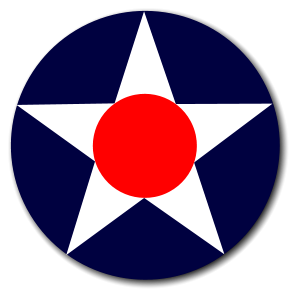The official owner's group for all models of American, Grumman, Gulfstream, American General, and Tiger LLC light aircraft is the Grumman Owners & Pilots Association, formerly the American Yankee Association (AYA). It is a non-profit organization incorporated in the State of California (originally in Massachusetts). The AYA was initially formed in June of 1976 by a group of AA-1 Yankee owners, headed by Ken Blackman and Dicey Miller. Ken and Dicey, along with the late Otto Koppen, Bill Marvel, Roy Garrison, Bob and Irene Arnold and Ron Levy have been honored as the only lifetime members of the American Yankee Association. A total of 17 aircraft met at an EAA fly-in Merced, California on June 3-5, 1976. From this modest beginning, the Association grew to a peak of over 2000 members.
The original concept focused on the model AA-1 "American Yankee" with owners of subsequent 2 and 4 place models accepted as "Associate Members". This was changed almost immediately to include as full members all of the 2 place owners and, in 1978, the by-laws were amended to include all of the other models built by American Aviation, Grumman American, Gulfstream Aerospace, American General Aircraft, and Tiger LLC. In honor of the original aircraft, designed by Jim Bede, the name of the organization has remained "American Yankee Association". Membership is open to all owners, pilots, and enthusiasts of the aircraft product line, ranging from the AA-1 through the GA-7.
The early years of the AYA were dominated by efforts to increase membership and get the word out on the existence of the Association. Ken Blackman acted as "President" during the first few years, and began to put out an occasional newsletter. In 1978, Tim Halchuck became the first elected President of the AYA. Dues were still $10 per year, and the AYA had 135 members. The first 150 HP Yankee appeared in the form of the Jim Collier STC. In September of 1978, the initial Constitution and Bylaws of the Association were adopted.
The early 80's were still a huge growth period for the Association, and a time of continued discovery about the aircraft. With the halt in production of the aircraft in December, 1979 , it was more important than ever that the AYA flourish. Many STC's were developed, and operation and maintenance tips were exchanged through the Association Newsletter, the AMERICAN STAR. Bev Hanson, Ken Blackman, Dick McChesney, and Van Swofford presided over this exciting period of the Association's growth. In 1982, the AYA had 362 members, and dues were $15.
The late 80's brought significant technical and program changes to the Association. As Bill Marvel took over the Newsletter in 1987, the advent of desktop publishing resulted in wholesale changes, both in content and style. New programs such as group buying and safety were instituted. The AYA was still growing rapidly, and like any fast growing organization, was feeling some pains. Should advertising be accepted in the Newsletter? Is the Association getting too big, too formal? Larry Foster, Bill Marvel, and Walt Porter were presidents of the Association during this time, and all did an exemplary job of leading the AYA into the successful organization it is today. Membership had mushroomed to 1500 by the end of 1987, with dues at $20.
With membership stabilized at 2000, the 1990's were a period of stability for the AYA. The organization is truly international in scope, with over 10% of the members residing outside the U.S. As a testimony to that, three Canadians - Glenn Hadley, Steve Peach and Sharon Spence - have presided over the organization in the 90's. The turnover within the Association averages about 300 per year.
The membership of the Association is concentrated in several geographic areas - California, Florida, Texas, Michigan and New York. The membership at that time consisted of approximately 400 AA-1 owners and 1200 AA-5 owners, reflecting the fleet breakdown in general.
For a period of years, membership has declined due to a number of factors, but primarily the advent of the Internet. Owners now had another avenue from which to get information about their aircraft.
Like many type clubs, the GOPA(AYA) offers a wide variety of benefits to its members. The Association has a group insurance policy which covers both aircraft hull and liability risks. The members have established an excellent safety record over the years, which has kept premiums down.
Unique to the GOPA is the Pilot Familiarization Program (PFP). This consists of experienced CFI's being available to provide new owners of these aircraft with the opportunity to become aware of their unique handling characteristics, such as the castering nosewheel. It is a very helpful program for most pilots transitioning to this make of aircraft.
GOPA has acquired a wealth of information concerning parts availability, safety, performance, maintenance, modifications, STC's, tips, and various operating techniques that is literally not available anywhere else. Copies are available of most every service letter, service bulletin, and airworthiness directive ever issued for these aircraft. Many of the members give generously of their time and knowledge to others in the Association.
 Grumman Owners and Pilots Association
Grumman Owners and Pilots Association





